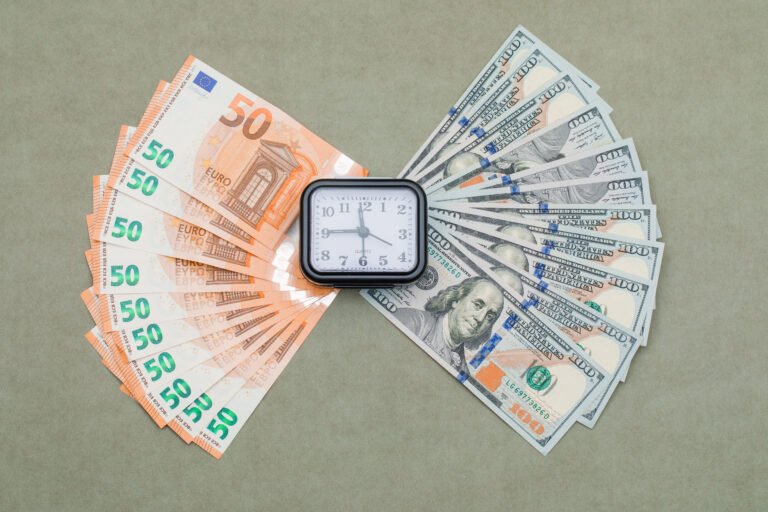1. 🎄 Introduction: A Debt-Free December Is Possible
Why I Decided to Plan Ahead
Every year, I used to enter January with one common feeling: regret. The excitement of Christmas would fade quickly, replaced by the reality of credit card statements, overdraft charges, and budget anxiety. After repeating this cycle more than once, I made a decision — I wanted to enjoy the holidays without sabotaging my finances. That’s when I committed to budgeting for Christmas months in advance, and it made all the difference.

The Holiday Spending Trap Most People Fall Into
Between last-minute gift shopping, festive gatherings, travel costs, and the pressure to make everything “perfect,” holiday spending can spiral out of control fast. Many people don’t plan for these expenses throughout the year — and when December hits, they swipe credit cards and figure they’ll “deal with it later.” But “later” often means starting the new year already buried in debt. I knew I had to break that cycle — and the good news is, you can too.
2. 💡 Setting a Realistic Holiday Budget
How I Calculated What I Could Afford
Holiday Debt: The first step to avoiding holiday debt was being honest with myself: What could I truly afford to spend without going into the red? I looked at my monthly income, essential expenses, and any upcoming financial commitments. From there, I carved out a holiday budget that felt doable — not one based on what others were spending, but on my financial reality.
Instead of setting a random number, I worked backwards. I decided how much I could save over a few months and made that my cap. That way, I wasn’t stretching my wallet — I was working within it.
Factoring in Gifts, Decor, Food, and Travel
Many people budget only for gifts, but I learned that holiday expenses are much more than just presents. I included categories like:
- 🎁 Gifts (family, friends, coworkers, Secret Santa)
- 🧑🍳 Holiday meals and baking
- 🧳 Travel or fuel costs
- 🎄 Decorations and wrapping supplies
- 🎉 Holiday events or outings
I even added a buffer for unexpected costs — because something always pops up!
The Importance of a Spending Cap
Once my categories were set, I gave each one a spending limit. That was the key. No matter how tempting a deal was or how much I wanted to upgrade a gift, I stuck to my caps. This simple boundary kept my spending intentional — and eliminated the guilt that used to follow every impulse buy.
3. 📅 Starting Early: Planning Ahead for Peace of Mind
When I Started Saving (Hint: It Wasn’t in December)
Waiting until December to start thinking about Christmas spending is a recipe for financial stress. So I flipped the script. I started saving as early as July, giving myself a solid 5–6 months to build a holiday fund. That meant smaller, manageable amounts each month — no scrambling, no panic.
Even starting in September or October can make a huge difference. The earlier you start, the less you feel it.
Monthly or Biweekly Contributions to My Christmas Fund
I treated my Christmas budget like any other bill. I set up automatic transfers to a separate savings account — just $20–$50 every payday. It didn’t feel like much at first, but it added up quickly. By December, I had a dedicated stash ready to go, which made spending guilt-free and stress-free.
Automating Savings for Zero Effort
The real game-changer? Automation.
By setting up automatic contributions, I didn’t have to think about it. No “should I save this month?” or “I’ll do it next week” delays. The money was moved out of sight and out of mind — and when it came time to shop, I had what I needed without touching my emergency fund or going into debt.
4. 🎁 Smart Gift Giving on a Budget
How I Made a List (And Actually Stuck to It)
Before I bought a single gift, I made a master list of everyone I planned to give to — family, close friends, coworkers, even Secret Santas. Then I assigned a dollar limit to each name, based on my total gift budget. That list became my non-negotiable plan.
This simple step kept me from impulse buying or adding “just one more gift.” If it wasn’t on the list or in the budget, it didn’t make the cut.
DIY and Thoughtful Gift Ideas That Cost Less
I realized that thoughtful gifts don’t have to come with a big price tag. Some of my favorite money-saving ideas included:
- 🕯️ Homemade candles or bath salts
- 🍪 DIY cookie or hot cocoa mix in jars
- 📷 Printed photo albums or framed memories
- 🧁 Baked treats packaged with care
- ✍️ Personalized letters or “coupon books” for experiences
These gifts were personal, meaningful, and affordable — and often more appreciated than expensive store-bought items.
Shopping Sales Without Impulse Buying
Yes, I took advantage of Black Friday, Cyber Monday, and early-season sales — but only with my list in hand. I didn’t shop just because something was 40% off. If it wasn’t part of my plan or didn’t fit someone’s budgeted gift, I skipped it.
Pro tip: I used a price-tracking app and browser extension to get notified of price drops — that way, I bought smarter without getting sucked into sale hype.
5. 🧾 Tracking Every Expense
My Favorite Budgeting Tools and Apps
To stay on track, I used budgeting tools that made holiday spending super easy to monitor. My favorites included:
- Google Sheets – for a simple, customizable holiday budget tracker
- YNAB (You Need A Budget) – perfect for assigning every dollar a job
- PocketGuard or Mint – great for syncing bank accounts and seeing real-time spending
The key was logging every purchase — even small ones like wrapping paper or stocking stuffers — so I could see exactly where my money was going.
Creating Spending Categories (Gifts, Events, Food, etc.)
Instead of having one big “Christmas” line in my budget, I broke it down into specific categories:
- 🎁 Gifts
- 🍽️ Food and drinks
- 🧳 Travel or accommodations
- 🎉 Parties and events
- 🧻 Supplies (wrapping, cards, décor)
That way, I could spot which areas were creeping over budget and adjust accordingly. If I overspent on décor, for example, I could scale back on party snacks or cut one gift.
Adjusting in Real-Time to Avoid Overspending
Holiday plans can change fast — someone unexpected might drop by, or a party might come up last minute. The beauty of tracking every expense was being able to pivot without panicking. If I spent more in one area, I’d reduce spending somewhere else to stay within my total cap.
This flexible, real-time approach helped me stay in control — not just of my money, but of my mindset, too.
6. 🏠 Holiday Fun Without Financial Stress
Free and Low-Cost Activities I Enjoyed
I used to think holiday fun had to come with a big price tag — tickets to events, pricey outings, or extravagant dinners. But this time, I found joy in simpler (and cheaper) things, like:
- 🚶 Evening walks to see neighborhood Christmas lights
- 📽️ Holiday movie nights at home with hot cocoa
- 🧁 Cookie baking and decorating parties with friends
- 📸 DIY photo booth setups with festive props
- 🧑🎄 Volunteering at local holiday events
Potluck Dinners, Secret Santa, and Other Budget-Friendly Traditions
Instead of hosting big, expensive dinners solo, I organized a holiday potluck — everyone brought a dish, and the pressure (and cost) was shared. We also swapped our traditional gift exchange for a Secret Santa, which meant we all spent less while still enjoying the fun of giving.
I also leaned into “experience gifts” like shared meals or outings, rather than piling on physical items. These alternatives helped everyone enjoy the holidays without financial stress.
Saying “No” Without Feeling Guilty
This was a tough one — but learning to set boundaries was part of budgeting smarter. I said “no” to things that didn’t align with my plan: overpriced parties, office gift exchanges I didn’t have room for, or expensive travel that could wait.
And you know what? The people who mattered most understood. Because joy shouldn’t come with debt — and I finally gave myself permission to celebrate on my own terms.
7. 💳 Avoiding Credit Card Temptation
Why I Left My Cards at Home
In past years, I’d rely on credit cards as a safety net — or worse, as a spending tool. But this time, I made a rule: no holiday spending on credit. To stick to it, I literally left my credit cards at home while shopping. If I didn’t have the cash (or enough in my debit account), I didn’t buy it.
This one change removed the temptation to overspend “just a little” and helped me stay laser-focused on my budget.
How I Used Cash Envelopes and Debit Only
I took things old-school by using a cash envelope system. I divided my total holiday budget into categories and stuffed labeled envelopes with physical cash. For online purchases, I used a separate debit card linked to my holiday savings account.
This method made the money feel real — and once an envelope was empty, that category was closed. It made me more intentional and aware of every rupee I spent.
The Psychology of Spending Real Money
Credit cards create emotional distance from our spending. You swipe now and feel the cost later. But with cash or debit, you feel it immediately — and that awareness was powerful.
I found myself asking questions I never used to ask:
- “Do I really need this?”
- “Will they truly appreciate this?”
- “Can I get this for less somewhere else?”
8. ✅ The Results: A Joyful, Guilt-Free Holiday
What I Learned From a Debt-Free Christmas
This was the first year I didn’t enter January feeling anxious about money. I didn’t dread checking my bank account. I didn’t push bills to the next paycheck. Most importantly, I didn’t sacrifice my financial goals just to keep up with seasonal pressure.
I learned that being intentional is more powerful than being excessive. By budgeting, planning, and sticking to my limits, I was able to enjoy the season fully present, not financially stressed.
How This Year Was More Meaningful (Not Just Cheaper)
Ironically, having a budget made the holiday feel richer — not poorer. Instead of rushing around trying to buy the biggest or trendiest gifts, I focused on quality time, thoughtful giving, and simple traditions. That shift made everything more joyful.
I felt proud of how I managed my money — and my time, energy, and peace of mind. It wasn’t just about avoiding debt. It was about redefining what a meaningful holiday looks like.
Carrying These Habits Into the New Year
The best part? These habits didn’t stop in December. The discipline I built — planning ahead, tracking spending, avoiding impulse buys — carried into the new year and helped me stick to my other financial goals, too.
Now I know that budgeting for joy isn’t restrictive — it’s empowering. And I’ll never go back to the old way again.
9. 🎯 Final Tips: Your Blueprint for Next Christmas
When to Start Planning for the Holidays
If you want a debt-free December next year, the best time to start is right after this one ends. Seriously. Reflect on what you spent this year and create a plan for next.
✅ Tip: Start saving in January or February, even if it’s just a small amount each month.
You’ll barely feel it — and come December, you’ll be miles ahead of everyone else scrambling for cash.
Setting Up a “Holiday Sinking Fund”
A sinking fund is simply money you save over time for a specific purpose — like the holidays. Open a separate account labeled “Holiday 2025” and automate a small deposit each payday.
Even ₨1,000 a week adds up to over ₨50,000 by Christmas.
You can use this fund for:
- Gifts
- Events
- Travel
- Food
- Decorations
- And even emergencies
Staying Focused on What Truly Matters
It’s easy to forget: the holidays aren’t about how much you spend — they’re about who you spend them with. Stick to your values, not the marketing noise.
Choose presence over presents. Thoughtfulness over things. Peace of mind over holiday debt.
❓FAQs
Q: How much should I budget per person for gifts?
A: That depends on your total budget and list size. A good rule: assign a fixed amount per person (e.g., ₨2,000–₨5,000) and stay within your cap.
Q: What’s a good monthly savings goal for Christmas?
A: Divide your total target by the number of months you have. Example: If you want to save ₨60,000 by December and it’s March, that’s ₨6,000 per month.
Q: What if I start late — is it too late to budget?
A: It’s never too late. Start now with whatever time and money you have. Even small changes in spending can free up cash fast.
Q: Is it okay to use credit cards if I pay them off right away?
A: Yes — if you’re disciplined and track every purchase. But if you tend to overspend, using cash or debit is safer.
Read Also: The Shocking True Cost of Owning a Pet Over 10 Years






